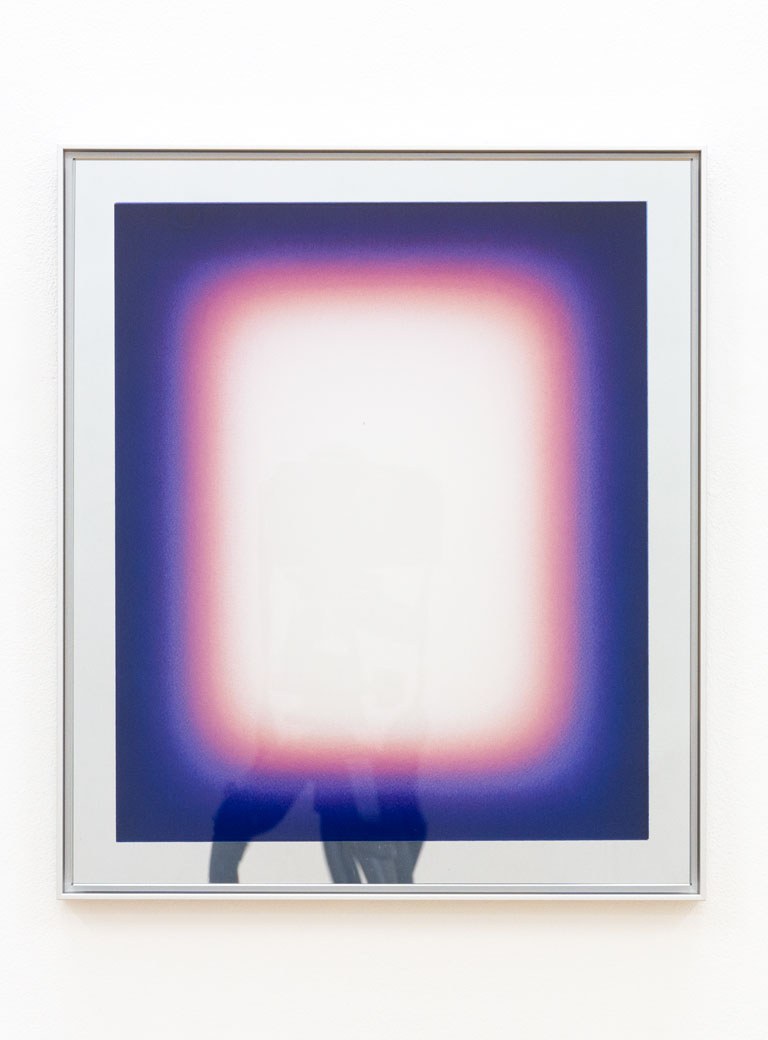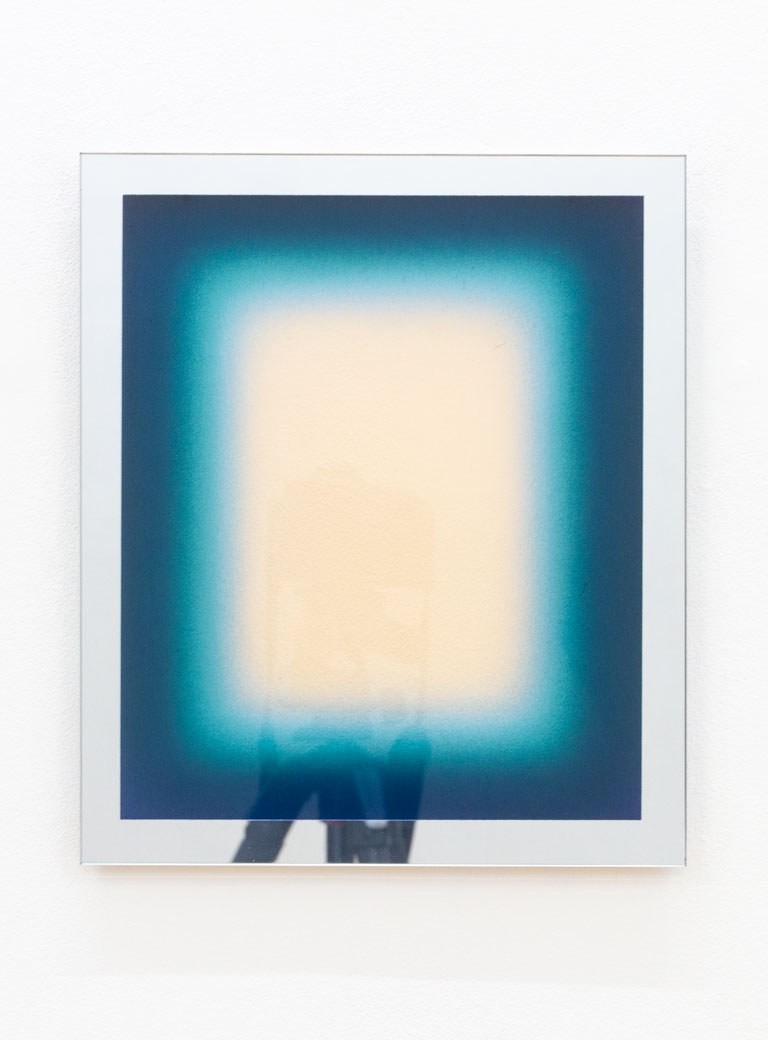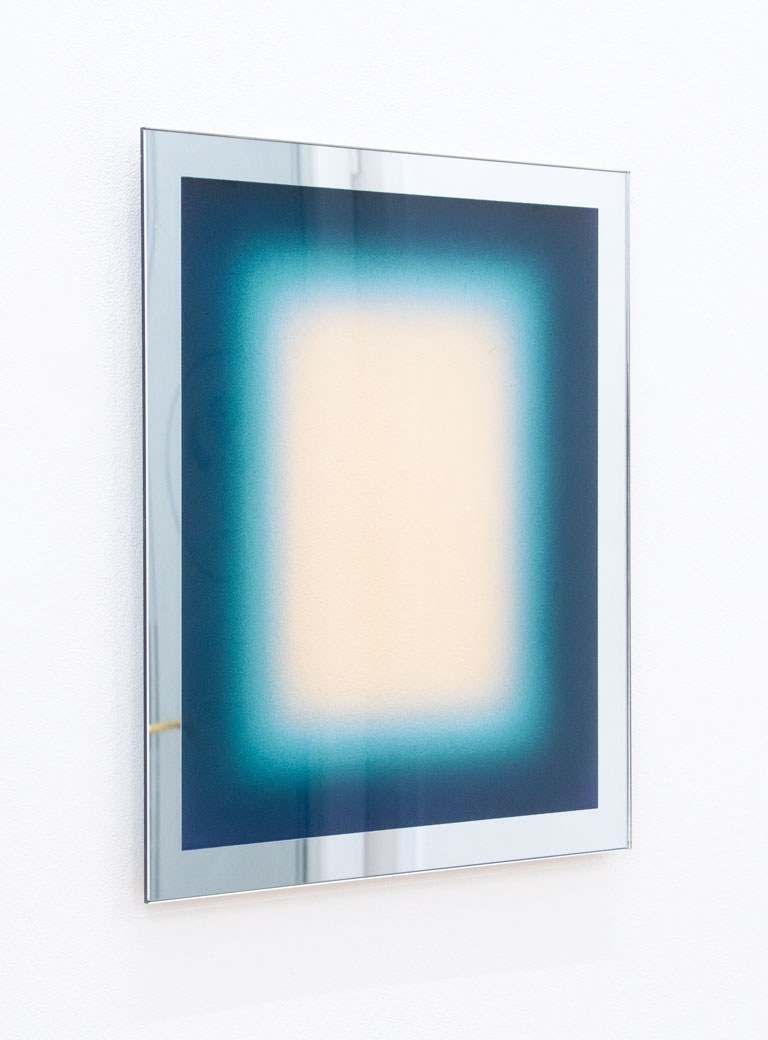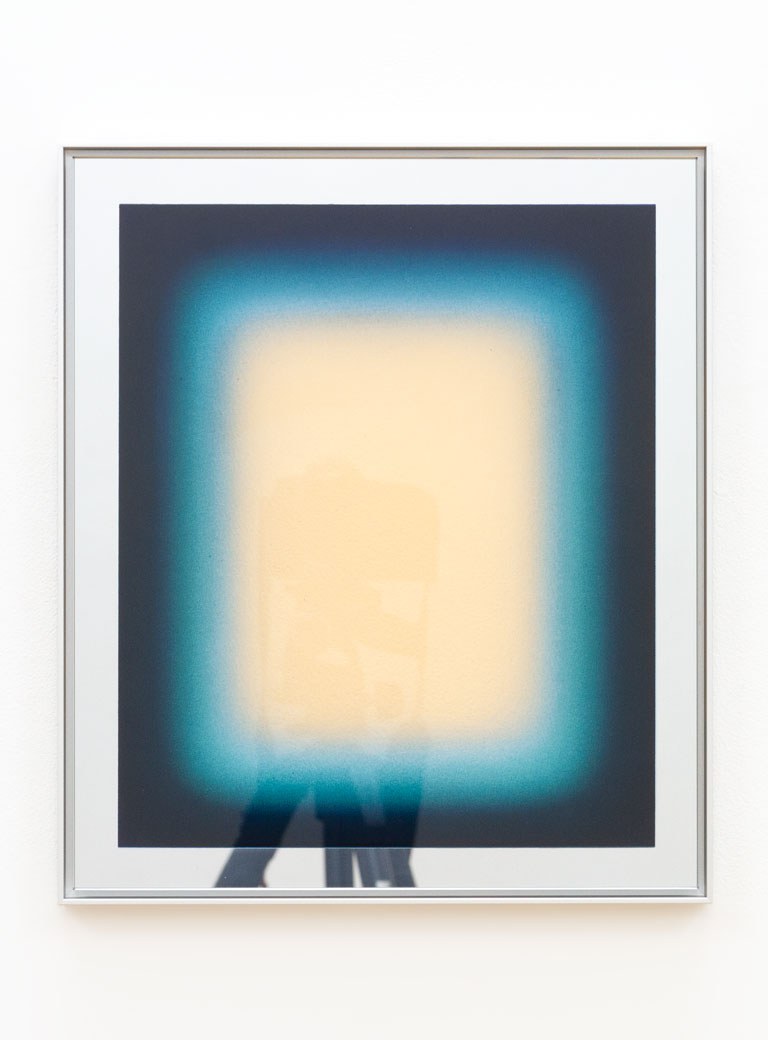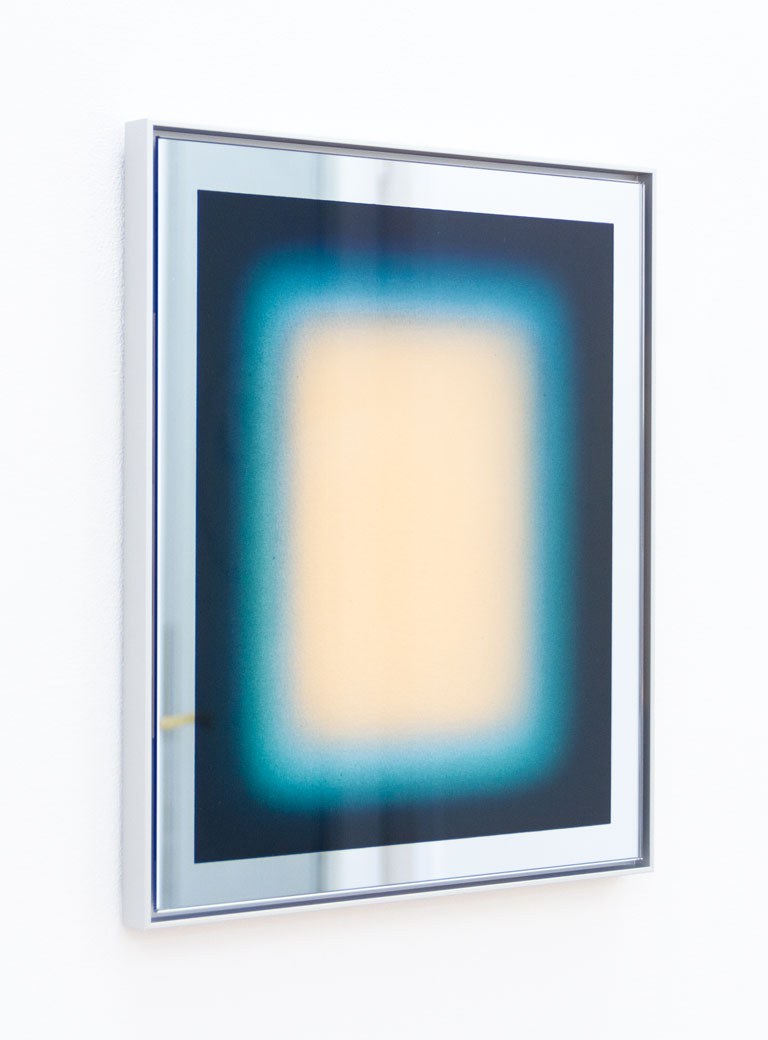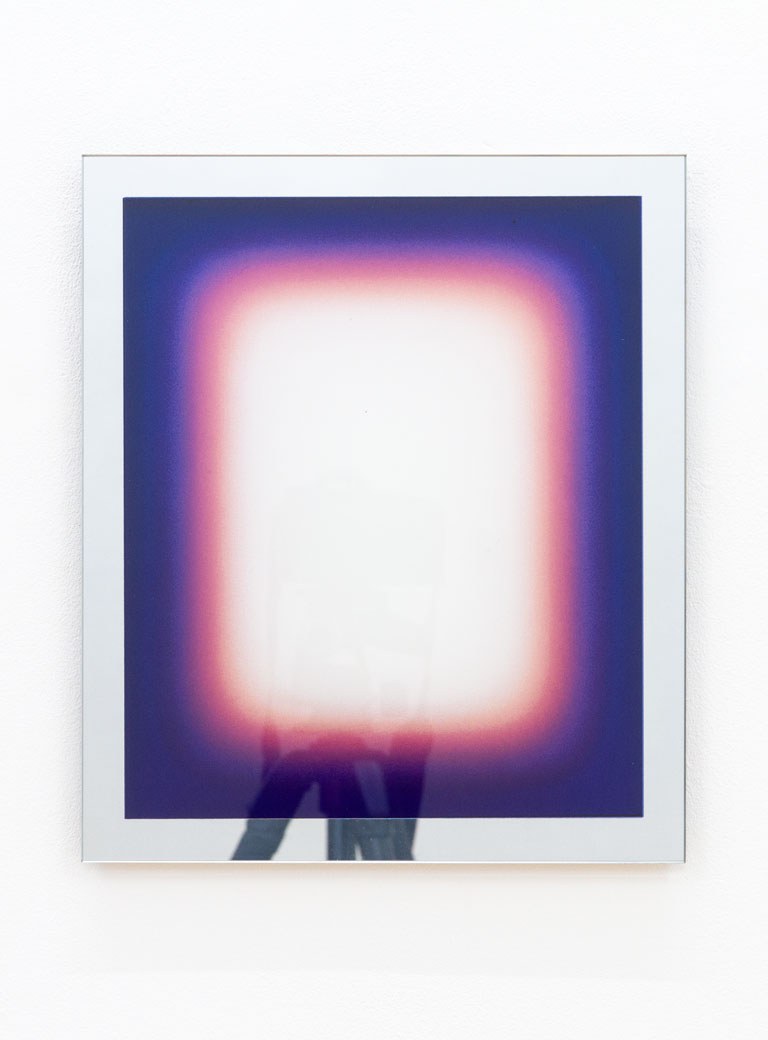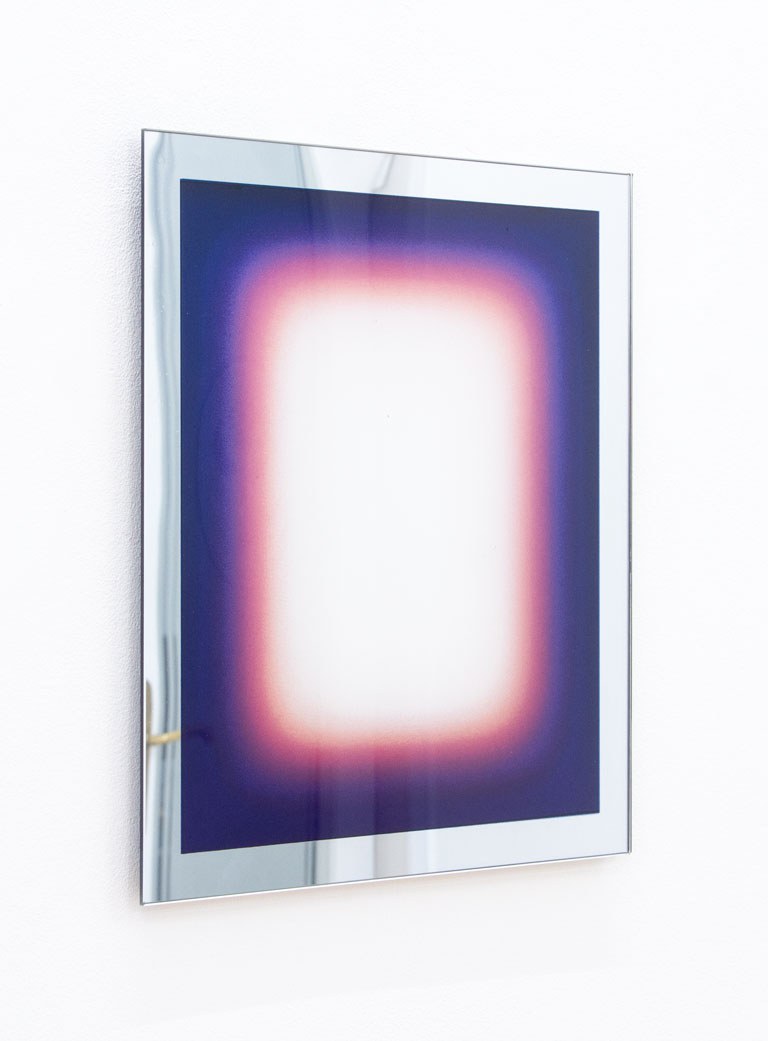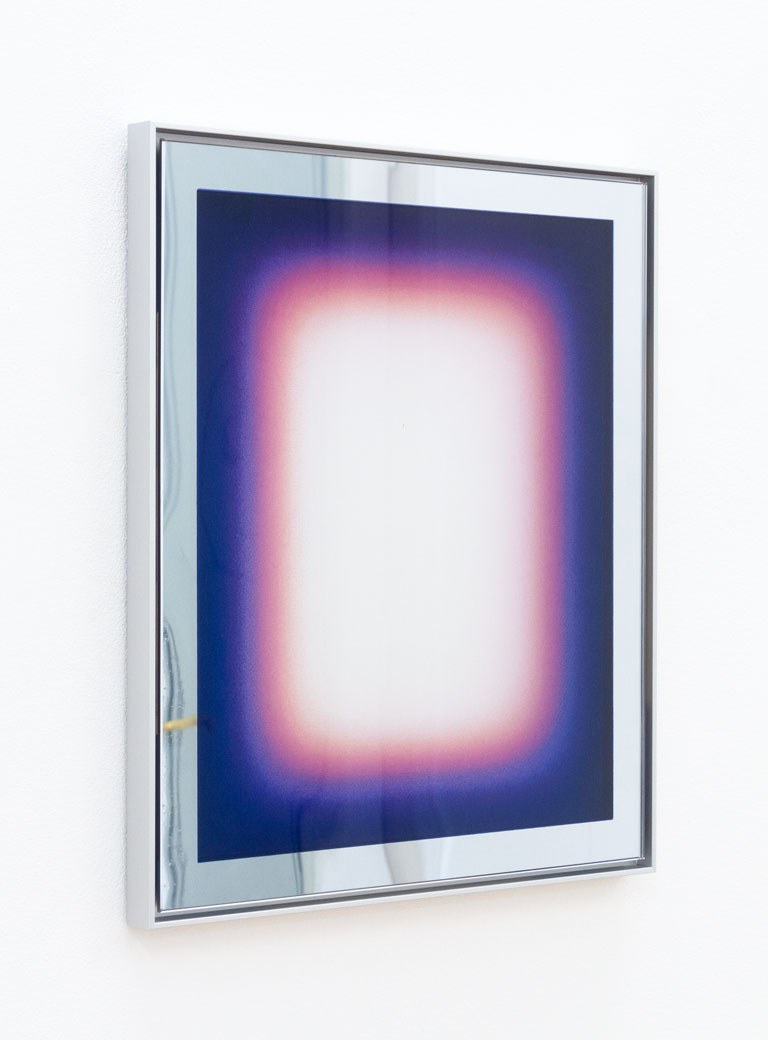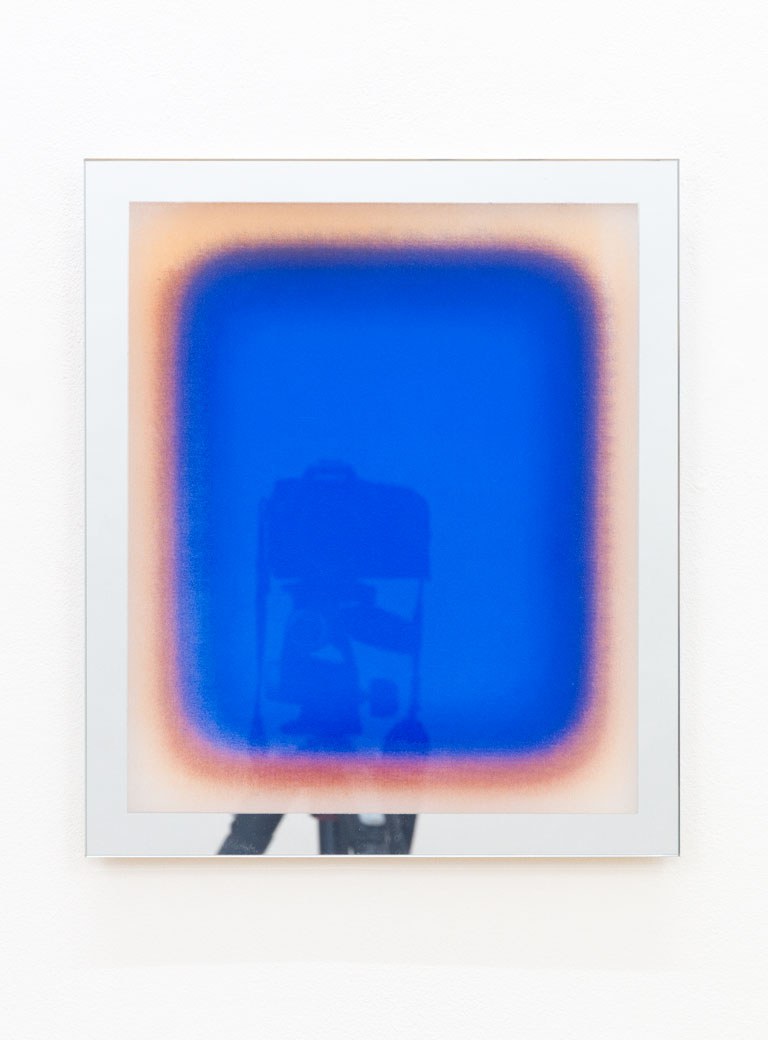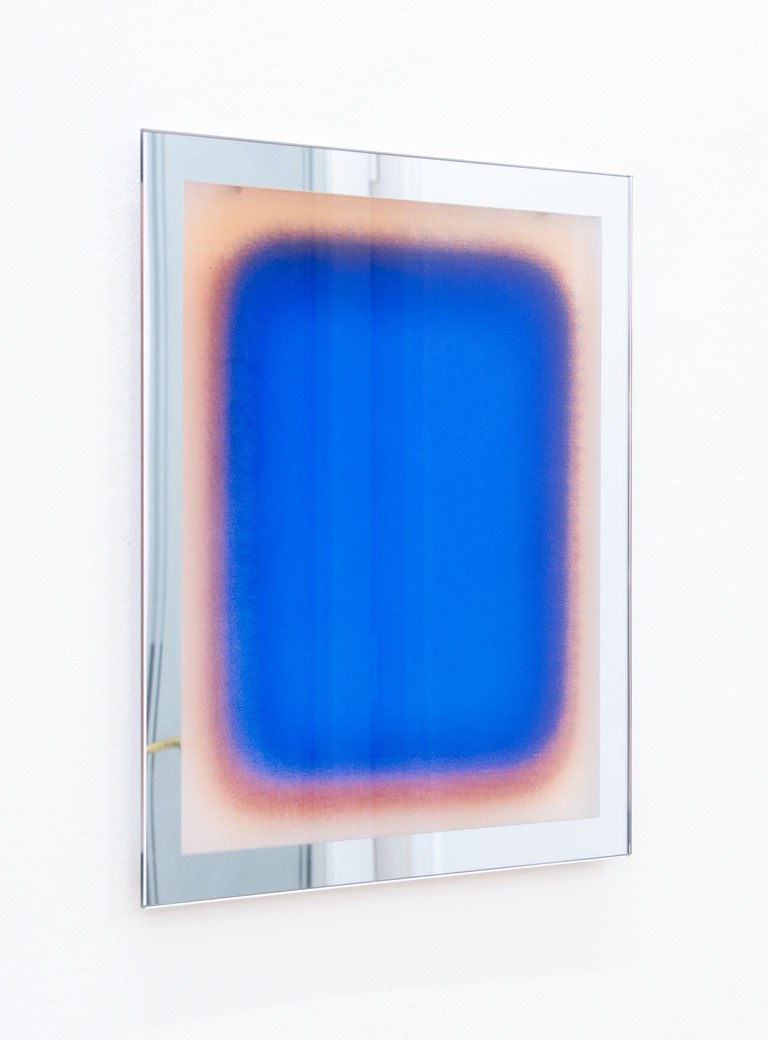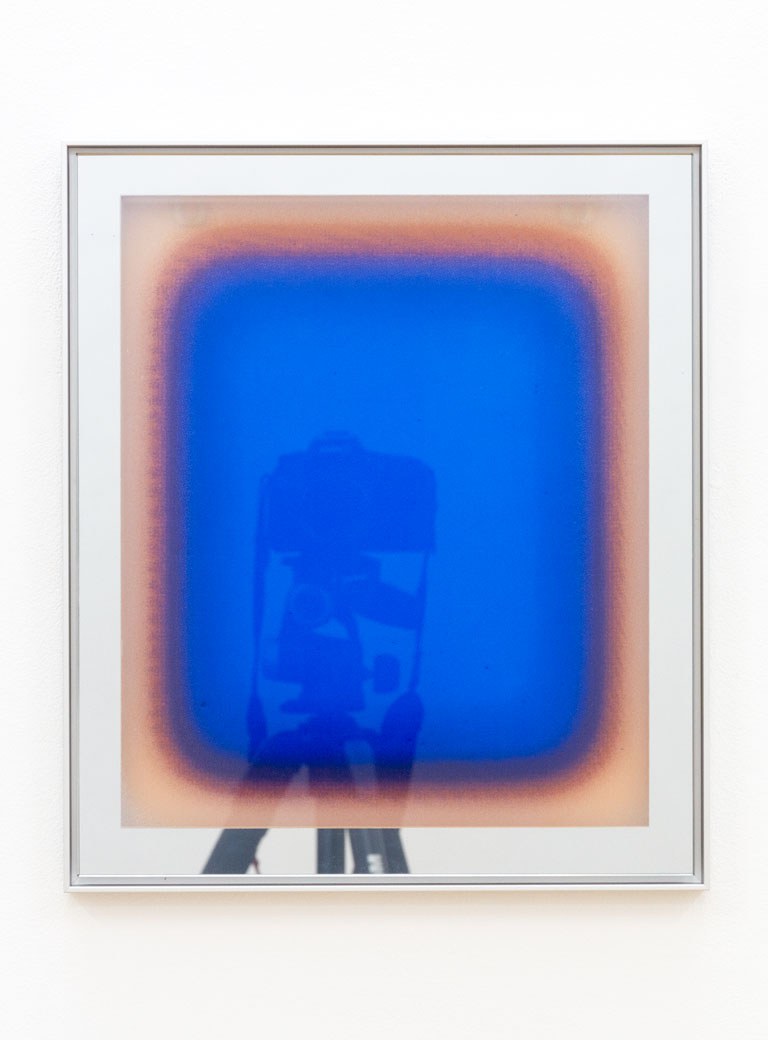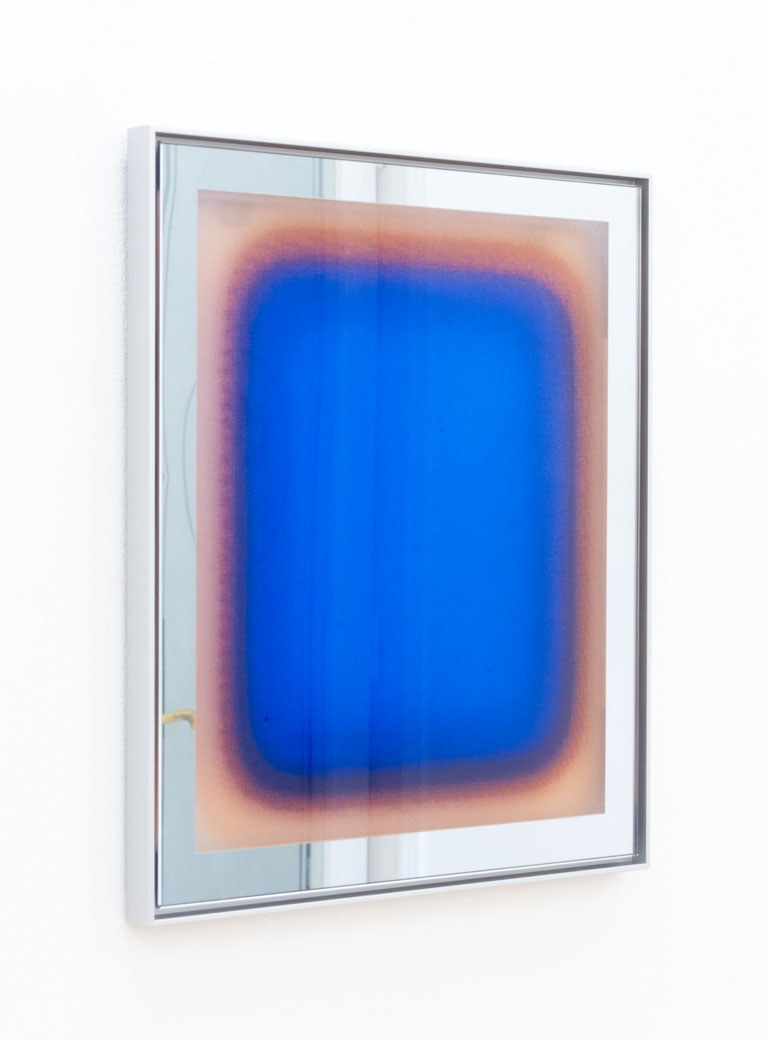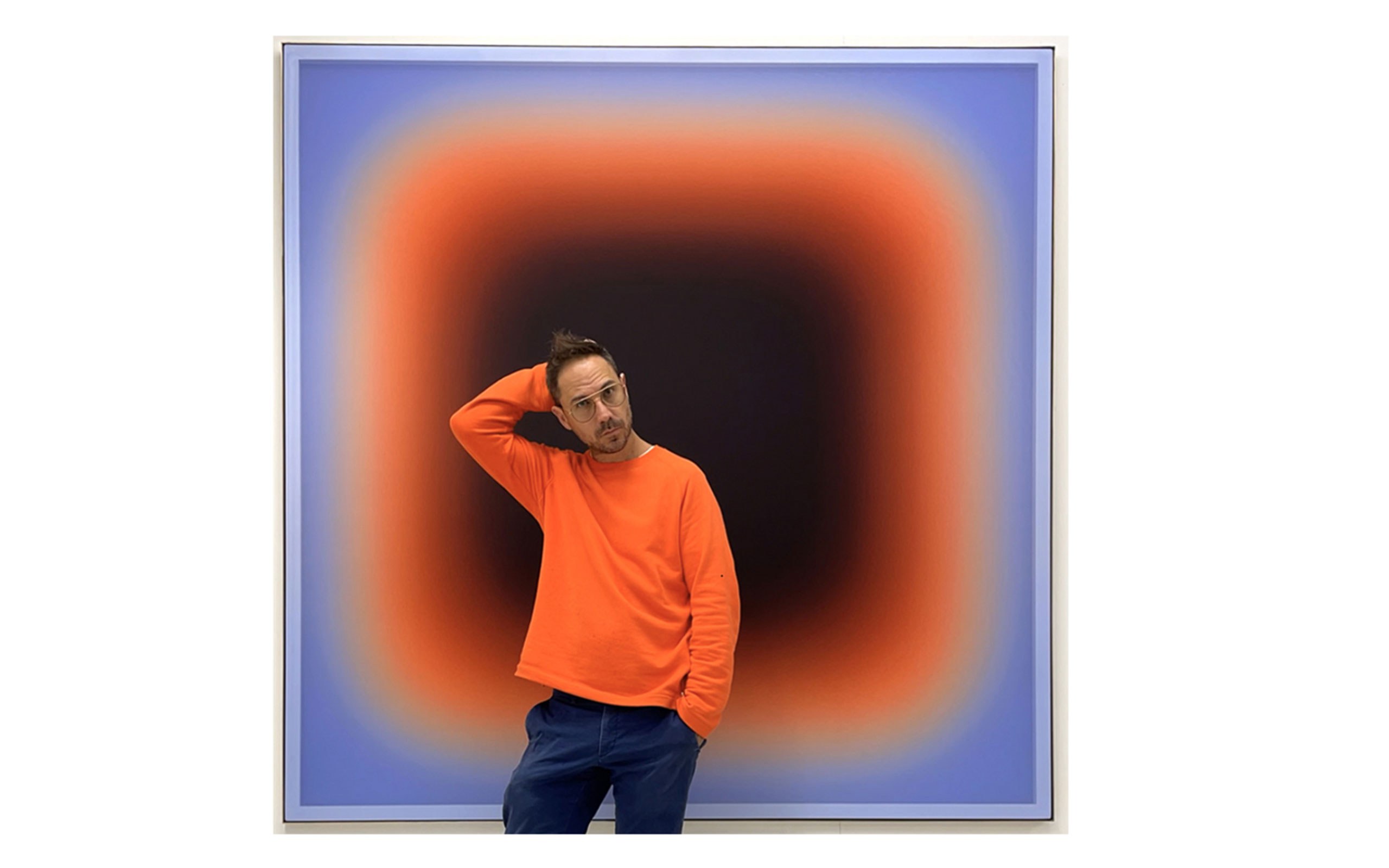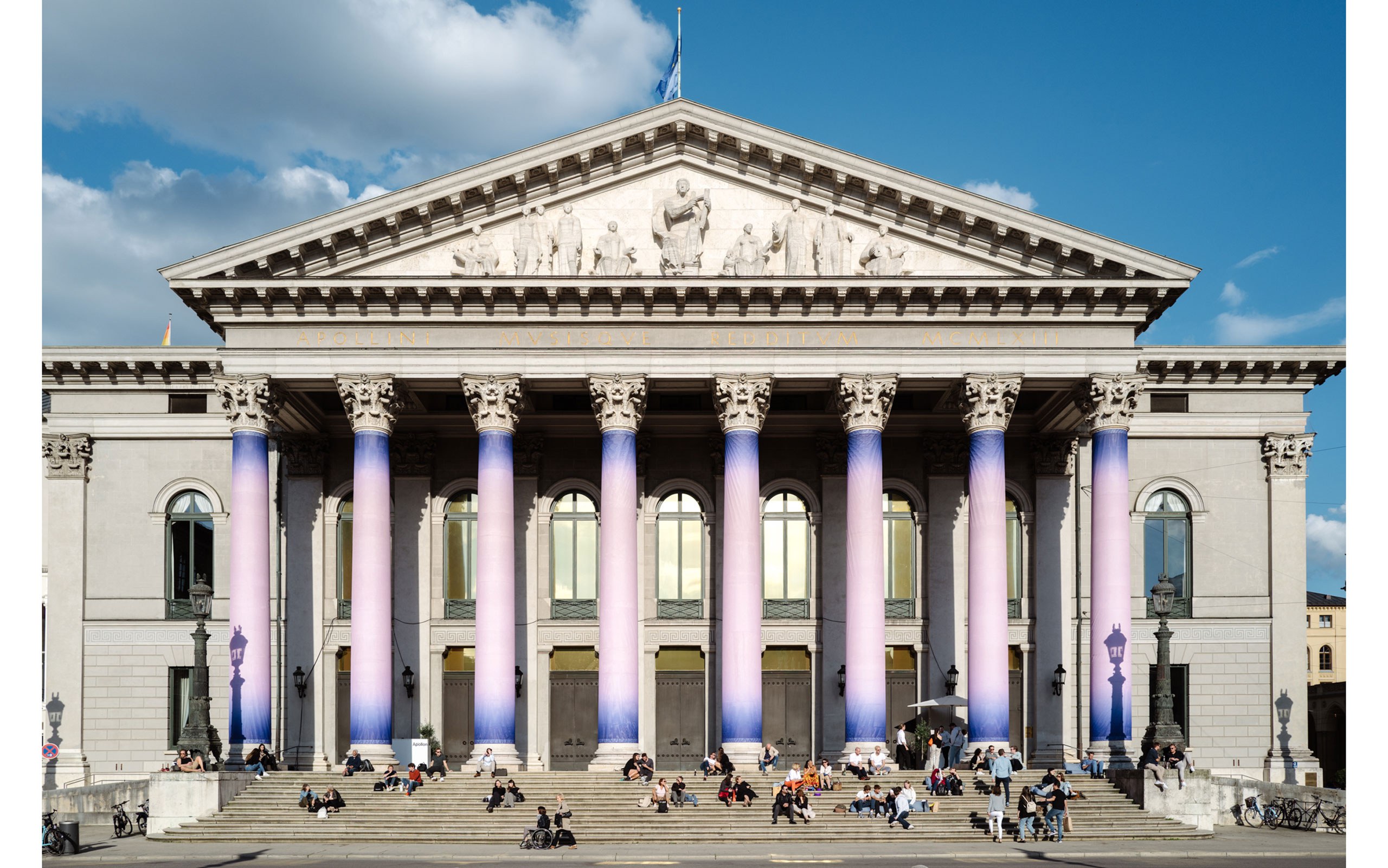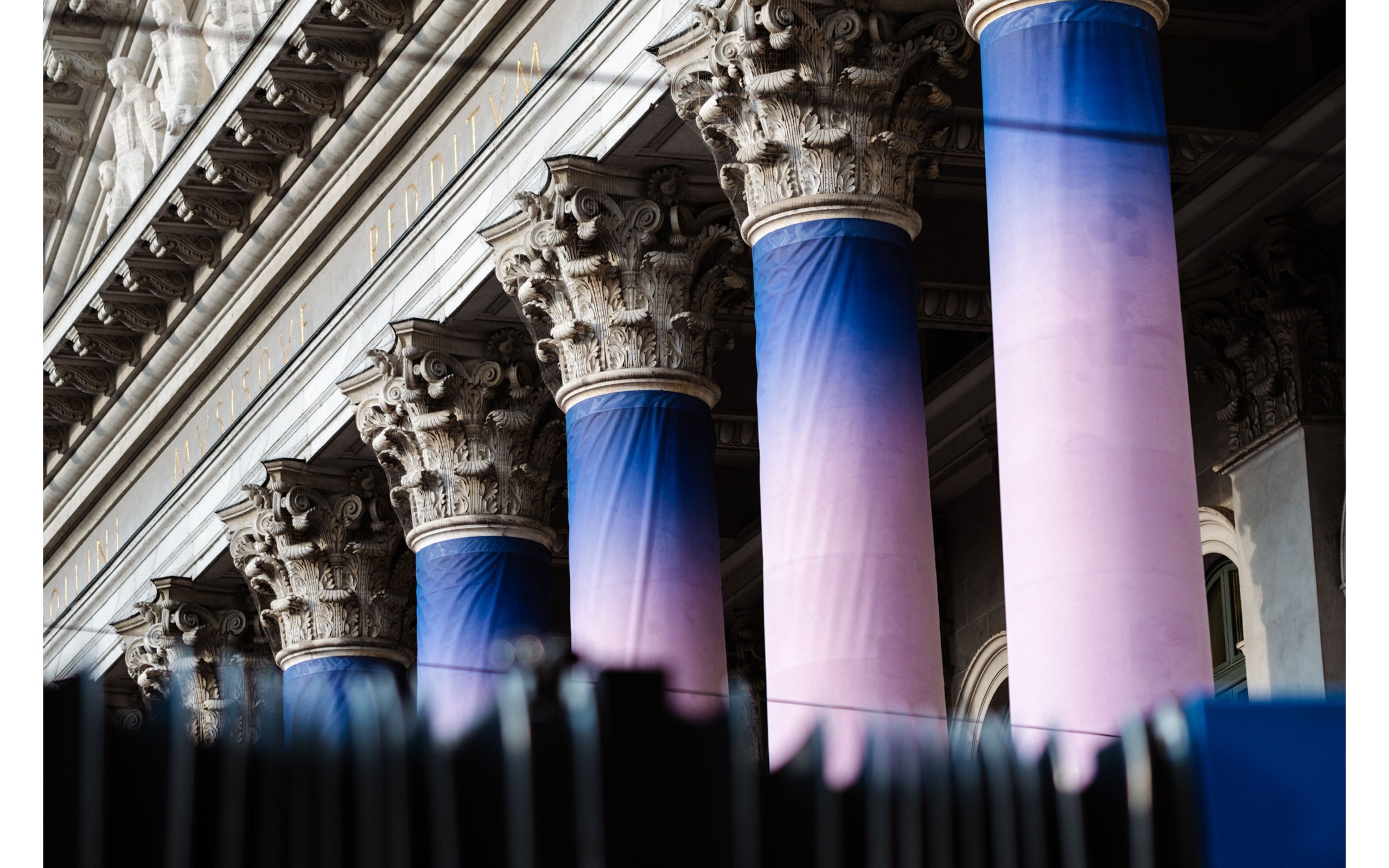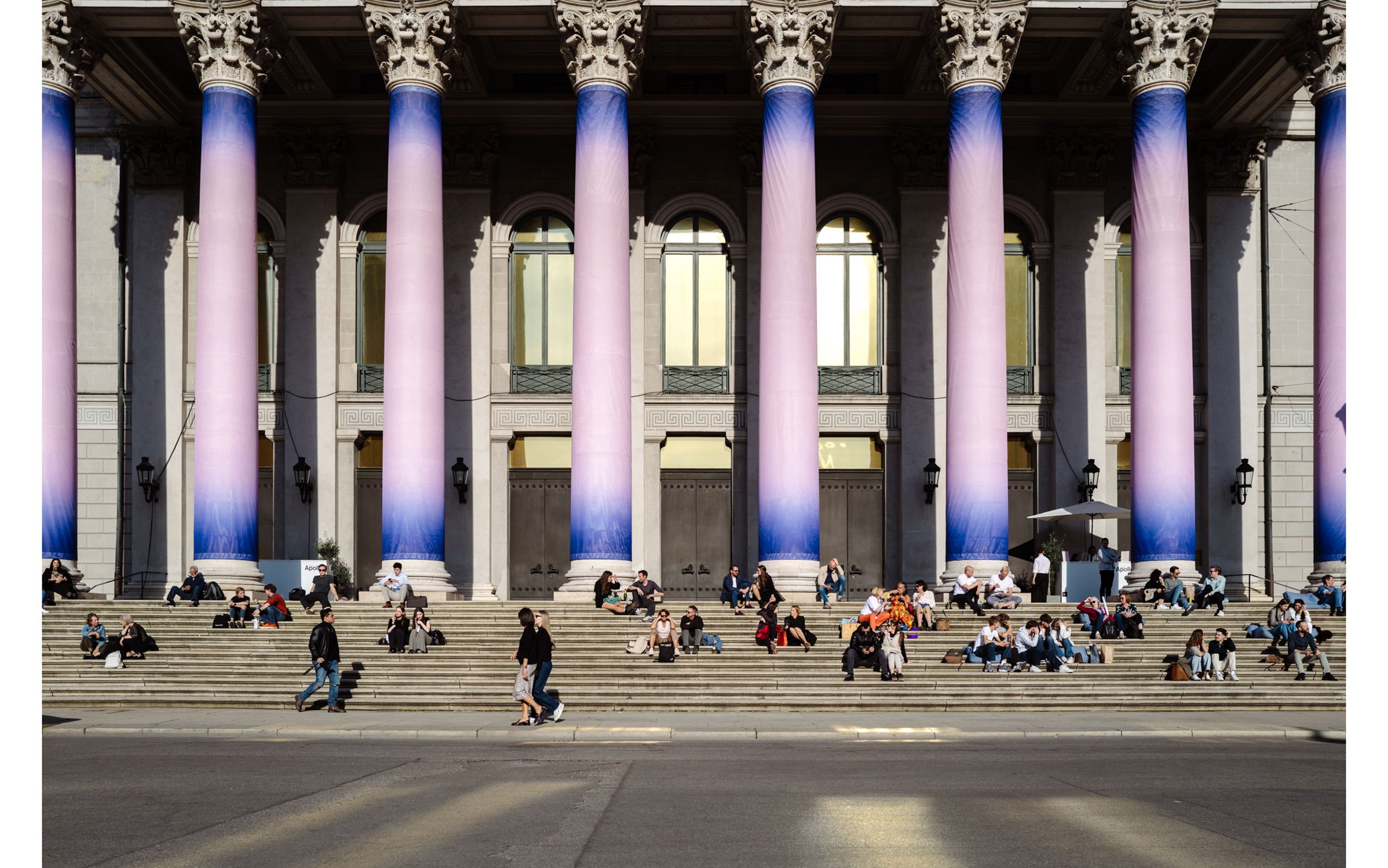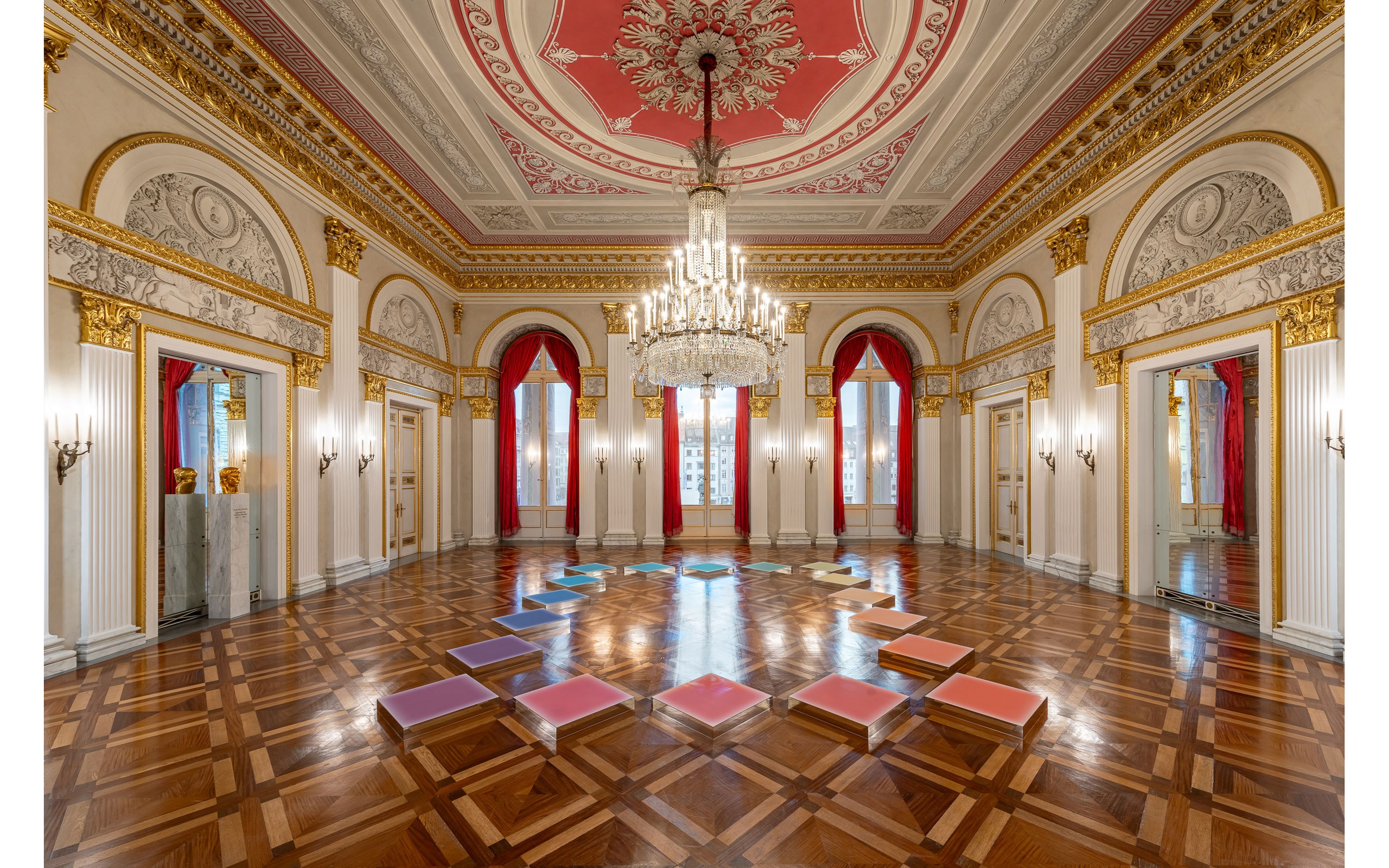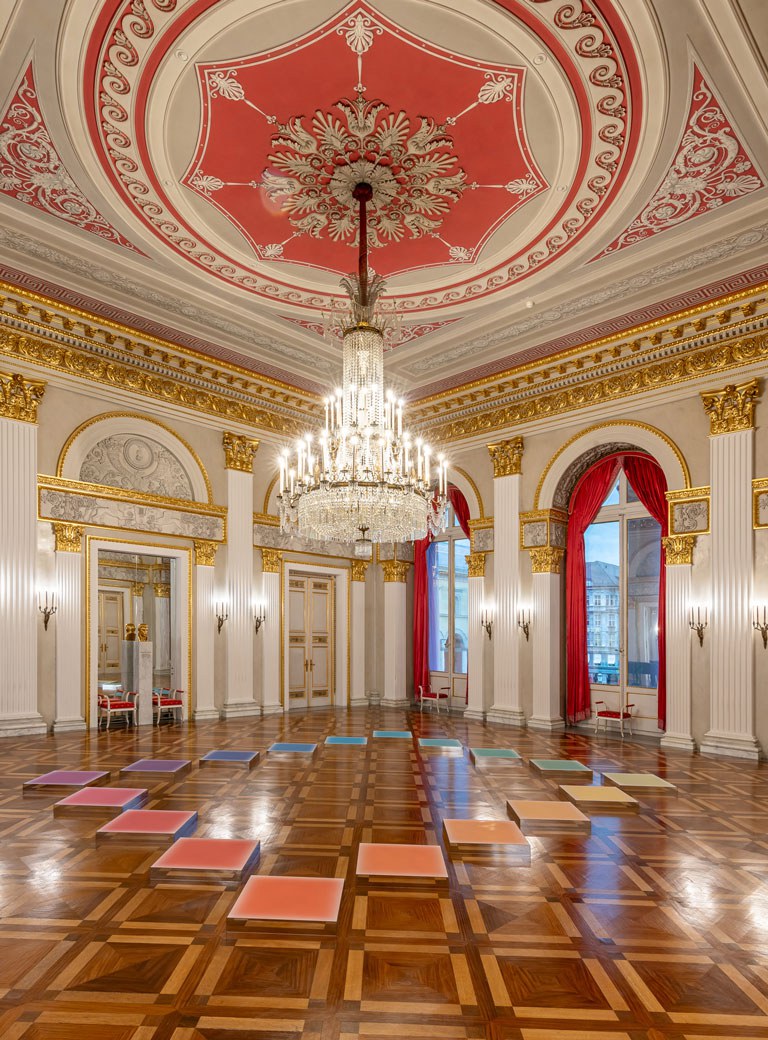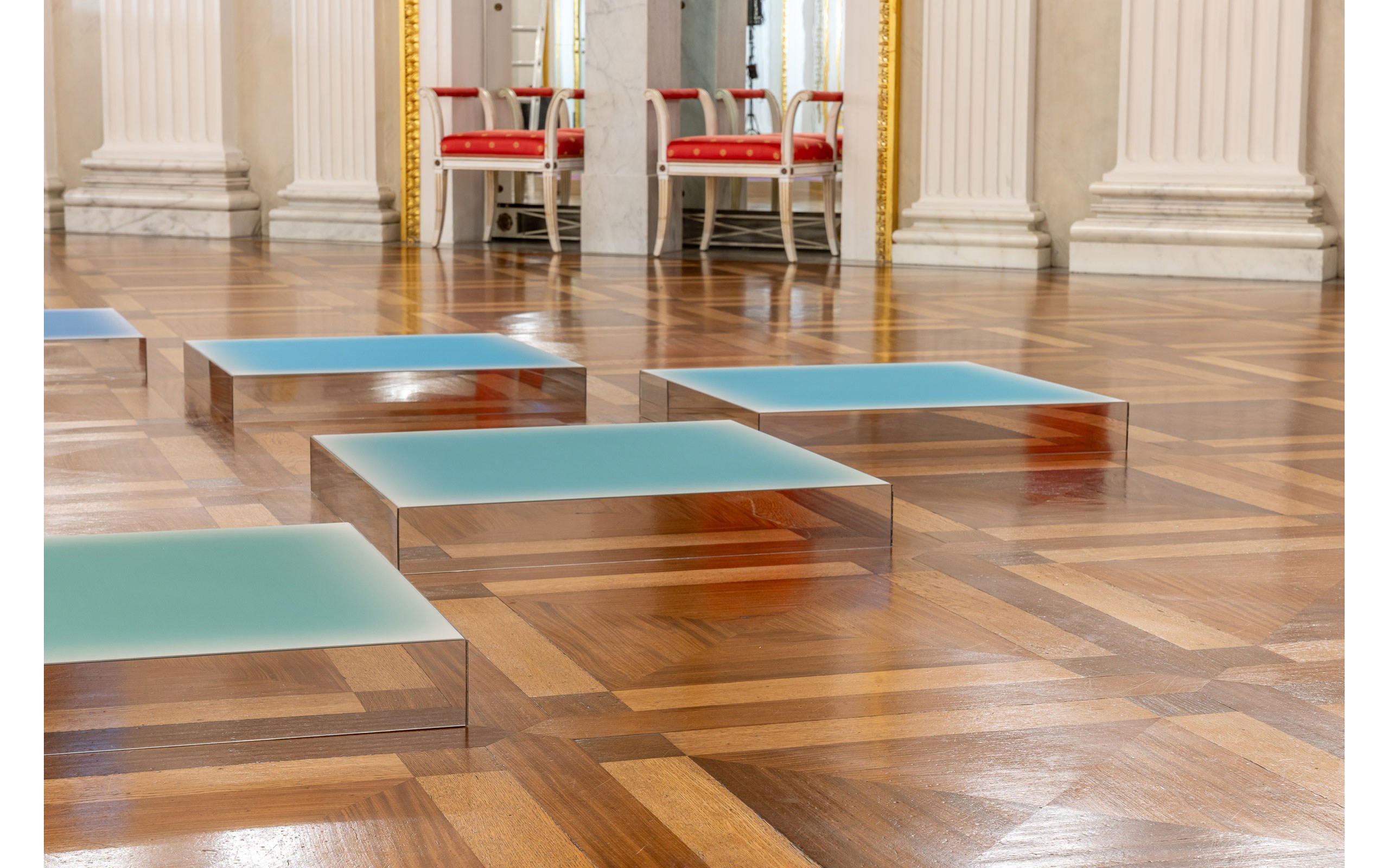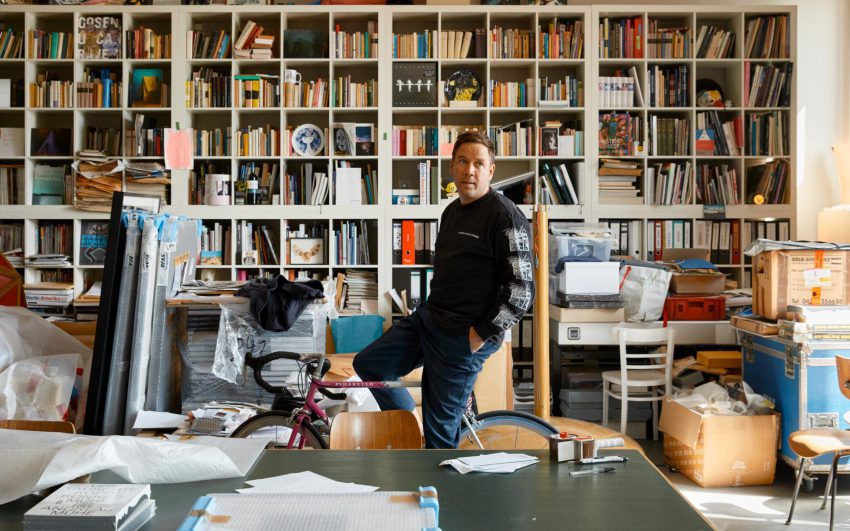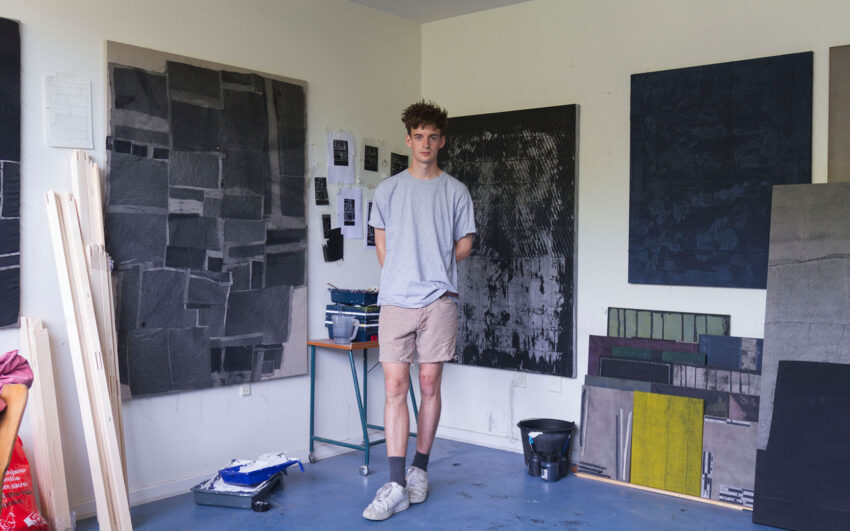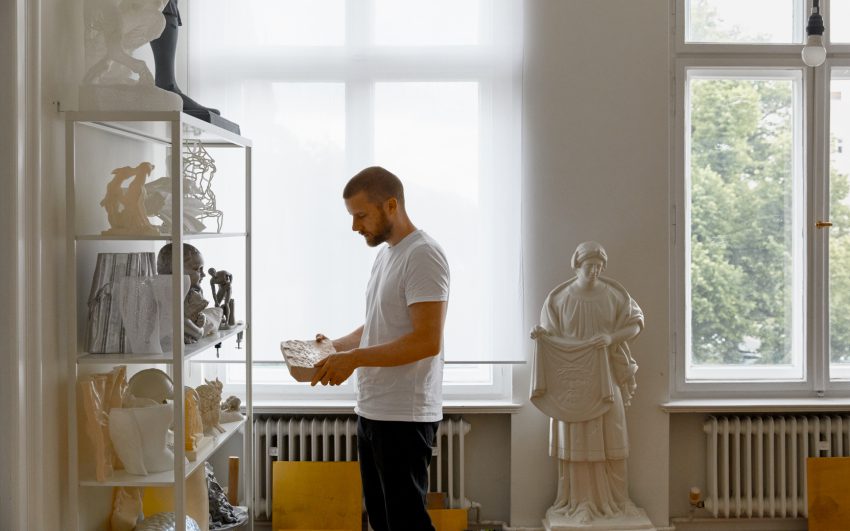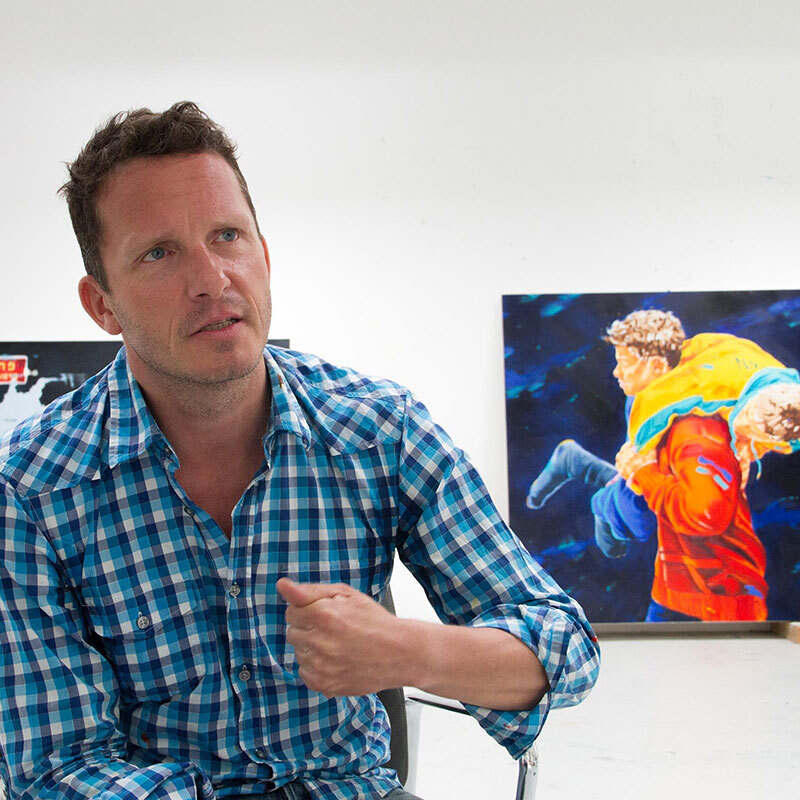staring at the sky (munich), 2024
Jonny Niesche’s work has long drawn inspiration from fashion, cosmetics and music. On the occasion of the 2024 edition of the Munich Opera Festival, Jonny Niesche entered into a collaboration with the Bayerische Staatsoper, the festival’s operator, with a fulminant display of a series of his works at the Nationaltheater, the opera’s venue. The show extends to the public space, as the pillars of the classicist building are dressed with one of Niesche’s “portals”.
The edition staring at the sky (munich) has been created with Jonny Niesche and in cooperation with the editions gallery Collectors Agenda on the back of the event. It draws on three of Jonny Niesche’s most recent and visually most powerful works, chosen to visually accompany the Munich Opera Festival 2024. The edition derives its title from the central theme set by the Bayerische Staatsoper for its opera season 2023/24, which in turn draws on a quote by Portuguese poet and writer Fernando Pessoa, who mused on the dichotomy of the human soul when he wrote “We are two abysses. A well staring at the sky.” Accordingly each different motif in the edition takes up a key word from the quote: abyss (munich), well (munich) and sky (munich).
For its production, Jonny Niesche experimented for the first time with a print on glass technique that compares to the tradition of reverse glass painting as it was used for sacral paintings since the Middle Ages or for the icon paintings of the Byzantine Empire. One of the main challenges of the reverse glass painting process is the application of layers of colour to produce a certain visual effect, making it a highly sophisticated technique.
The edition’s production process involved the printing of ceramic pigment by silk-screen, requiring each colour to be previously hand-mixed from a very limited palette of available colours to approximate the visual appeal of the original reference work. Each pigment colour responds differently at various burning temperatures, requiring numerous burning runs to establish the ideal oven temperature. Equally, the colours react unforeseeably during the burning process when mixed or when layered on top of each other. Not only does this require rare craftsmanship, but a certain degree of openness as to the end result.
It was this alchemic quality of the process that intrigued Jonny Niesche to abandon his otherwise highly precise and controlled production process to see his work transformed into a new aesthetic experience. The aspects that usually create the seductive appeal of Jonny Niesche’s works, such as the moiré effect produced by the printed-on voile fabric or the self-reflection of the viewer in the shining surfaces, are giving way to new aesthetic qualities.
Where the silk-screen allowed pigments to pass, dots of colour stick to the glass surface, as if to offer a counter form to the printed-on grid-like mesh that Niesche usually employs. Silver paint applied to the back of the glass recreates the viewer’s image as in many of Niesche’s work. But for the first time, the viewer’s reflection occurs in real glass mirror, instead of polished steel or acryl.
The completely hand-made nature of each piece in the edition lends a unique quality to every individual work. The minimalist and sleek appeal of the edition is dramatically contrasted by the manual craftsmanship and imperfection, inherent in the rare and complex production process.
